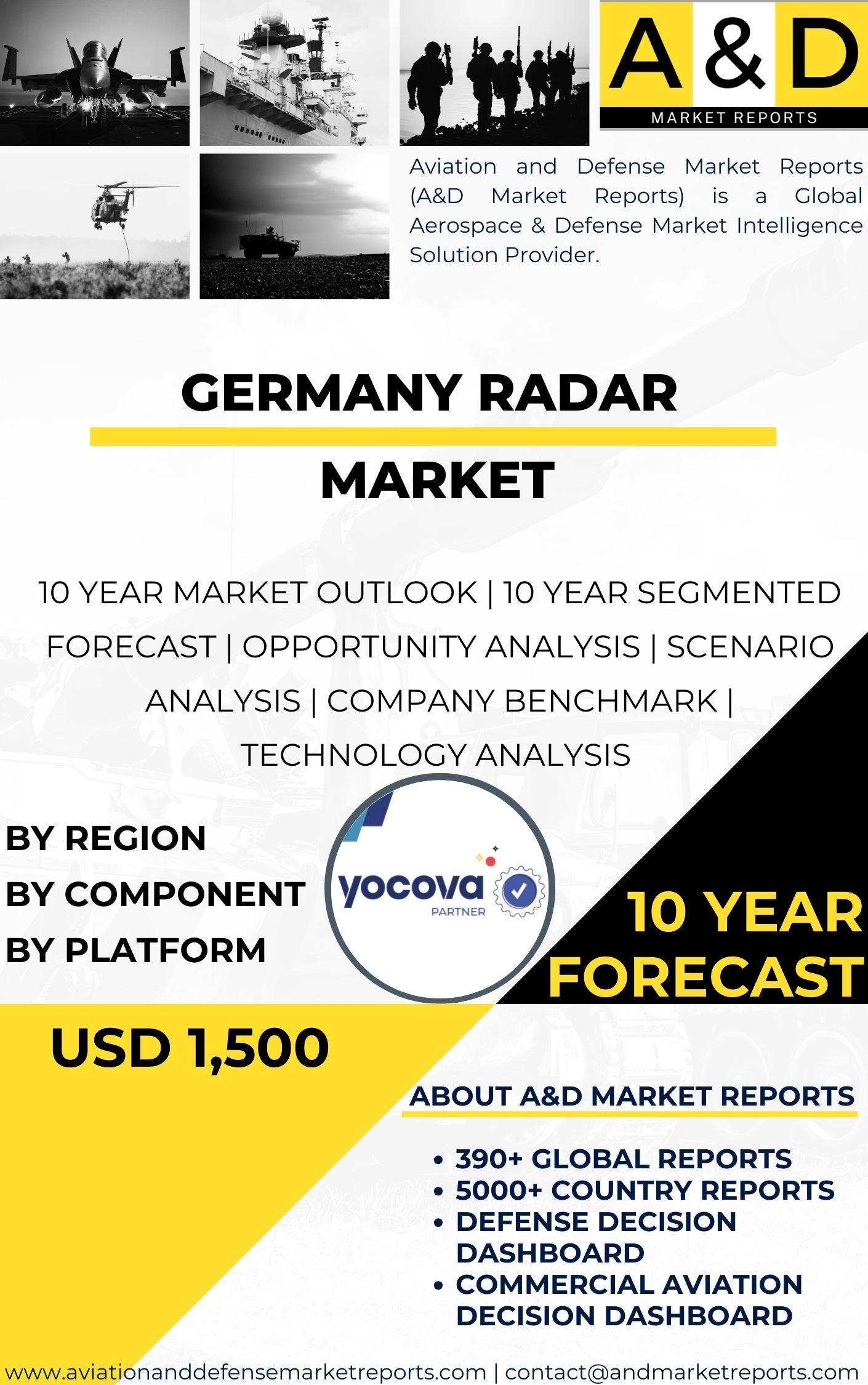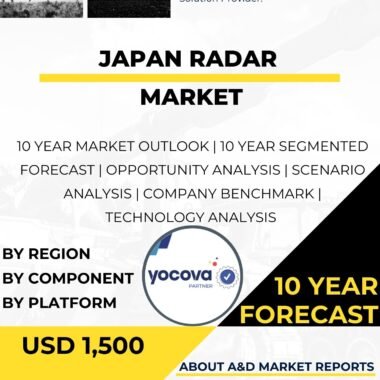Description
Germany radar market has been a significant and dynamic segment within the country’s defense and aerospace industries. Radar systems play a crucial role in modern warfare and civilian applications, providing critical capabilities such as surveillance, target detection, tracking, navigation assistance, and weather monitoring. Germany’s strong industrial base, technological expertise, and commitment to defense innovation have contributed to the country’s prominence in the global radar market.
The Germany radar market encompasses a wide range of radar systems, including ground-based, naval, airborne, and space-based radars. These radar systems utilize various technologies, such as active electronically scanned array (AESA), phased-array, synthetic aperture radar (SAR), and passive radar, to meet diverse operational requirements.
One of the primary drivers of the Germany radar market is the country’s commitment to national security and defense. As a leading European economy and a key NATO member, Germany recognizes the importance of investing in advanced radar capabilities to enhance its military’s situational awareness, early warning capabilities, and overall defense posture.
The Germany radar market has also been influenced by the changing nature of modern warfare and the evolution of military threats. As adversaries develop sophisticated and stealthy technologies, such as advanced aircraft and missiles, Germany must invest in state-of-the-art radar systems capable of detecting and tracking these emerging threats.
Moreover, the Germany radar market is driven by the need to adapt to evolving security challenges, such as cyber threats and asymmetric warfare. Cybersecurity measures are becoming increasingly critical for radar systems, as they are vulnerable to cyberattacks that could compromise their functionality and data integrity.
In recent years, there has been a growing emphasis on developing radar systems with enhanced versatility and multi-functionality. Modern radars are often designed to perform multiple roles, such as surveillance, target tracking, and electronic warfare, using a single radar platform, thereby reducing the need for multiple radar systems and simplifying logistics.
The export potential of German radar systems is another important aspect of the market. Germany’s reputation for producing high-quality defense equipment and its strong technological base make it an attractive supplier for other countries seeking advanced radar solutions. However, export decisions are subject to international regulations and political considerations, especially when it comes to sensitive military technologies.
Challenges faced by the Germany radar market include the need to balance investments in radar capabilities with other defense priorities. Radar systems can be resource-intensive to develop, procure, and maintain. Decision-makers must carefully prioritize investments to ensure that radar capabilities align with Germany’s broader defense requirements.
Additionally, the Germany radar market must address challenges related to spectrum management and the increasing demand for radio frequency (RF) bandwidth. As more radar systems are deployed and commercial wireless communication networks expand, spectrum congestion becomes a concern that can affect radar performance.
In conclusion, the Germany radar market is a significant and dynamic segment within the country’s defense and aerospace industries. Advanced radar systems play a crucial role in enhancing Germany’s military capabilities, supporting NATO’s collective defense efforts, and addressing emerging security challenges. The market is driven by Germany’s commitment to defense innovation, technological advancements in radar technologies, and the need to adapt to evolving military threats. As Germany continues to invest in research and development and explores versatile and multi-function radar solutions, the radar market is expected to play an increasingly pivotal role in shaping the country’s defense capabilities and contributing to global security.




